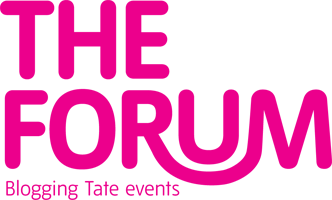
I picked up a couple of useful pointers during Friday’s Street Art talk. First of all: if you’re ever seized with sudden yen to slap a subversive poster on a billboard, tape over a road sign, rip up a few paving slabs or set fire to a CCTV camera, hang fire until Sunday morning. According to Brad Downey, one of the two artists speaking, this is the prime time for committing acts of street art when you can get away with pretty much anything. Secondly, if the police happen to take issue with whatever you’re doing – even if it is a Sunday – then don’t, whatever you do, run. Instead, ‘tell the truth; tell them what you’re doing’, and they’re more likely to laugh than arrest. This from Mustafa Hulusi, the other artist present, seconded by Downey, who attested to his experience in this area with his opening gambit: ‘Hi, I’m Brad Downey, and I’ve been arrested seven times for making sculpture.’ (Although this statement goes some way to indicate that however charmingly you explain yourself the police will still arrest you. But then, perhaps Downey’s art just wasn’t their thing). 
Apart from dispensing practical advice, the talk, guided by the curators of the Street Art exhibition currently emblazoned across the ex-power station’s flank, revolved around the experiences that Downey and Hulusi have had when engaged in ‘subverting the public sphere.’ Hulusi, who now has a flourishing fine-art practice, regaled us with an entertaining account of how, graduating from Goldsmiths in the early 1990’s and facing the bleak realities of the job market, he took a job with a flyposting outfit. Having been fascinated by the ‘world of images’ and posters during his degree, Hulusi now found himself appropriately embroiled in an industry which contributed directly, in its nebulously illegal fashion, to the daily construction and deconstruction of London’s visual make-up. Good as the money was, the job had its downsides: namely, coming into violent conflict with an angry competitor who wanted Hulusi off his patch, and a serious encounter with the Belgium Police, who did not merely arrest Hulusi but interrogated him on suspicion of terrorism.
Like Hulusi, Downey has come into his fare share of conflicts when venturing into the public sphere with subversion in heart and mind. He showed a series of videos that followed him on his quest through the streets of various metropolises to ‘make the biggest piece of vandalism but make it as happy as possible.’ I found Downey’s express aim to use whatever the street provides to make a monument – ‘coming with nothing, leaving something’ – the most appealing aspect of his work. He feels there ‘is already enough information’ on the streets; the challenge lies in ‘shifting it around’, refiguring what is there so that people look afresh. One piece, created in East Berlin on a crisp Sunday morning, sees Downey taking a crowbar and prising up a step-pattern of grey flagstones, as dour communist architecture bristles all around him. He lines the slabs up at right angles to the spaces they have left in the pavement to create a Carl Andre-esque arrangement – then, as he walks away, tips the nearest one over so they cannon into each other like dominoes. 
But here’s the rub: visually arresting and conceptually interesting though the sculpture was, I couldn’t help worrying about someone falling over it on the way to the shops. I put that out there in the full knowledge that it makes me sound like a hopeless reactionary: however, health and safety issues aside, street art, and the artists who make it, need to answer the challenge of who has the right to put what where. Not especially a legal right in any strict sense of the word, but rather the ‘rights’ of the other people who use the public space. If you’re operating so explicitly in the public sphere, is it important to temper your own wishes with a consideration of how the other people using the space might feel about the works that suddenly appear in it? Or are such considerations not only irrelevant but impossible to determine? As Downey and Hulusi’s experiences demonstrate, the arena of street art is a contested one. The art itself feeds off this, and rather than avoiding such questions, often seems to court them openly. 
A response to this was what the title of Friday’s talk ‘Public Space: who’s it for’ seemed to promise. Potentially, the conversation between Downey and Hulusi – a practicing street artist and an artist who has frequently insinuated words and images into the public domain – could have generated a fruitful interrogation of then issues attendant on art in public spaces. Yet although the talk touched on them, it floated along on top of the artists’ experience without making any wider connections, or joining up the points made between them. Hulusi did begin to do this when he talked of the need to ‘determine what is a public space’ and decide ‘what do you want to do with your public spaces’, opening up the possibility of street art as an antidote to the shabbiness of much visual data displayed on our streets. He pointed out a little-known fact that over 80% of the billboards around London are actually illegal, clinging to the edge of buildings without proper planning permission. Which gets you thinking: if the adverts are as illegal as the art, well, we might at least have something interesting to look at…
Thursday, July 17, 2008
Public Partnership
Labels:
avant-garde,
posters,
street art
Subscribe to:
Post Comments (Atom)




No comments:
Post a Comment